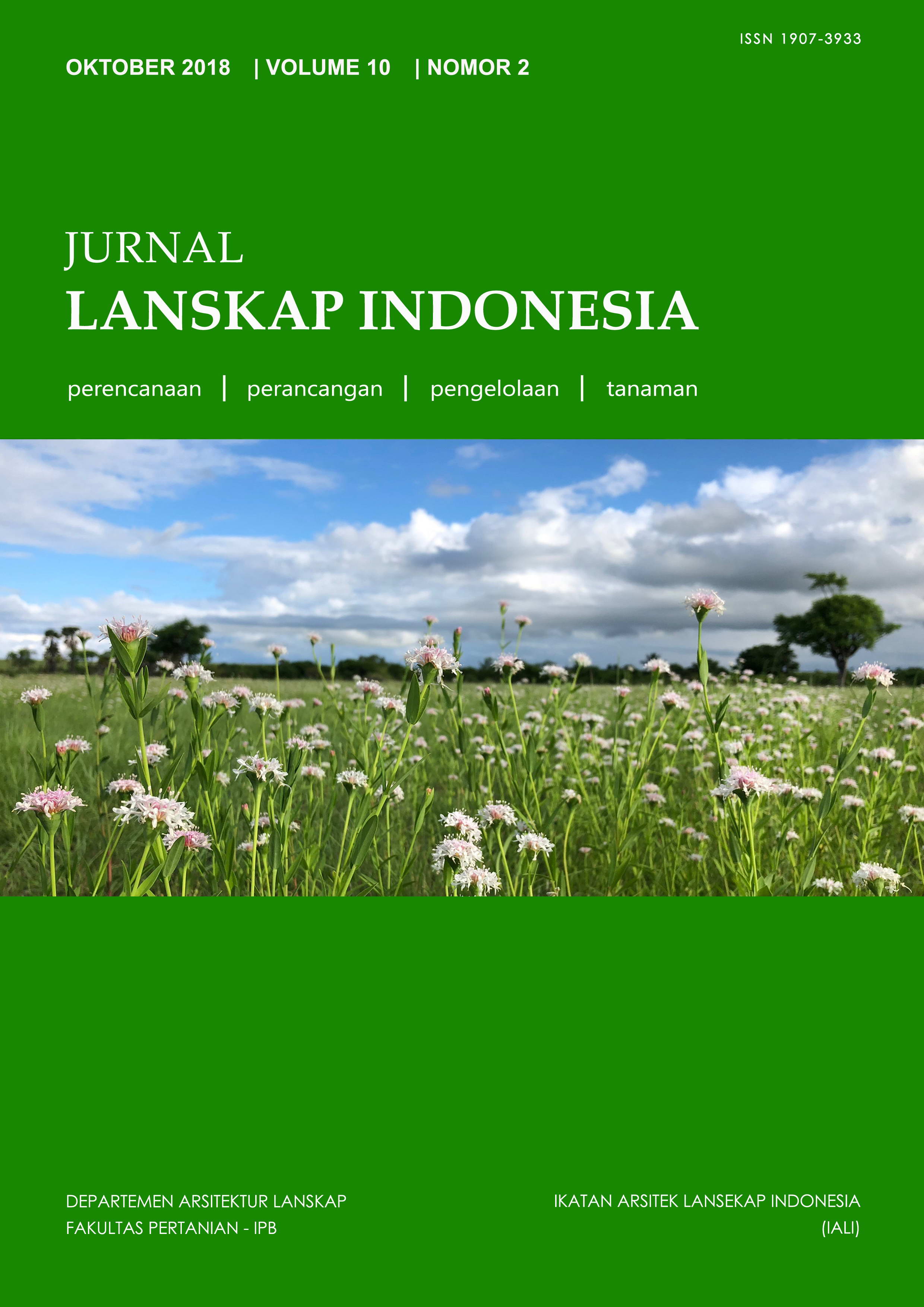ANALYZING THE WILLINGNESS TO WORK AND WILLINGNESS TO PAY FOR RWH IN JAPAN
Abstract
Citizen participation of rainwater harvesting is a valuable practice to mitigate problems such as groundwater mining, land subsidence, and urban flooding cause by global warming and urbanization in japan. In this study, we defined rainwater harvesting as activities carried out by citizens aimed at using rainwater, and examining the hypothesis that people’s willingness to work (WTW) and willingness to pay (WTP) for rainwater harvesting differ depending on their lifestyles and experience of using rainwater. We conducted a survey over the internet in August 2017, covering 1,794 people in Japan. The survey questions addressed three areas: (1) respondents’ lifestyles, (2) their experience of using rainwater, and (3) their willingness to participate in rainwater harvesting. As the results, we concluded that activities that ask for time or labor are preferable to those that ask for money, and people’s WTW and WTP do in fact differ based on lifestyle. Older people, full-time housewives/husbands, and non-workers have comparatively more time for participating in rainwater harvesting, and showed more interest in activities that ask for time or labor. Men and owners of single-family homes have higher annual incomes and thus greater WTP for rainwater harvesting. Moreover, WTW and WTP differed depending on whether a person had experience using rainwater. Men and younger people having more experience than women and elderly people. However, there were only 10% of the public has experience using rainwater, which shows that there is room to further promote rainwater harvesting.Downloads
References
Abidin, H. Z. Andreas, H. Gumilar, I. Wibowo, I. R. R. 2015. On correlation between urban development, land subsidence and flooding phenomena in Jakarta, Proceedings of the International Association of Hydrological Sciences. 370: 15-20.
Asakura, A. Shibata, Y. Ono, S. 2014. A study of Willingness to Pay for the Installation of Household Detention Tank. Environmental Information Science. 28: 233-238
Association for Rainwater Storage and Infiltration Technology (ARSIT). 2006. Installation Manual of Rainwater Storage and Infiltration Facilities in Single-family Houses. http://arsit.or.jp/wp/img/book/kodate.pdf (accessed 19 Sep 2017).
Architectural Institute of Japan (AIJ). 2011. Guideline for Rainwater Harvesting Architecture Architectural Institute of Japan Environmental Standards AIJES-W0002-2011: Architectural Institute of Japan
Berndtsson, J. C. 2010. Green roof performance towards management of runoff water quantity and quality: A review. Ecological Engineering. 36: 351–360.
Boelee, E. Yohannes, M. Poda, J. N. Mccartney, M. Cecchi, P. Kibret. S. Hagos. F. Laamrani, H. 2013. Options for water storage and rainwater harvesting to improve health and resilience against climate change in Africa. Reg Environ Change. 13(3): 509-519.
Dirks, F. J. H. Rismianto, D. De Wit, G. J. 1988. Groundwater in Bekasi District, West Java, Indonesia Natuurwet. Tijdschr 70(6), 47-55.
Domènech, L. & Saurí, D. 2011. A comparative appraisal of the use of rainwater harvesting in single and multi- family buildings of the Metropolitan Area of Barcelona (Spain): social experience, drinking water savings and economic costs. Journal of Cleaner Production. 19: 598-608.
Feitosa, R. C. Wilkinson, S. 2016. Modelling green roof stormwater response for different soil depths. Landscape and Urban Planning. 153: 170–179.
Julius, J. R. Prabhavathy, R. A. Ravikumar, G. 2013. Rainwater Harvesting (RWH) - A Review. International Journal of Scientific & Engineering Research. 4(8): 276-282.
Kasai, T. 2012. Effect of Environmental Load Reduction by the Rainwater Harvesting System for Detached House based on Regional Characteristics. Journal of Rainwater Catchment Systems. 18(1): 27-33.
Kawasaki, A. Meguro, K. 2011. A preliminary investigation on the introduction of housing water tanks to store rainwater for improving urban environment and disaster risk reduction. SEISAN KENKYU. 63(4): 451-456.
Kumar, R. Thaman, S. Agrawal, G. Poonam, S. 2011. Rain Water Harvesting and Ground Water Recharging in North Western Himalayan Region for Sustainable Agricultural Productivity. Universal Journal of Environmental Research and Technology. 1(4): 539–544.
Naito, T. 1950. Utilization of rainwater at the foot of Mount Fuji. Journal of the Agricultural Engineering Society, Japan 17(2-3), 109-113.
Mamada. M. 2010. Estimation of WTW (willingness to work) as a forest volunteer based on contingent behavior. Food, agriculture and the environment. 7: 40-47
Murakawa, S. Morita, D. Miwa, B. Koshikawa, Y. 1986. Study on the environment of island domestic water system in okinawa: On the rain water uses. Journal of Architecture, Planning and Environmental Engineering. 368(0), 52-61.
Ohno, E. 2001. Benefit Evaluation of River Environmental Improvement Project by CVM: A Comparison between WTP and WTW. Journal of Japan Society of Civil Engineers. 18(1): 49–55.
Ozaki, T. Wada, Y. Miura, H. Matsumoto, Y. 2003. Inhabitants consciousness for the multipurpose stormwater reservoir. Journal of Environmal systems research. 31: 195-200.
Policy Publicity Office of the Cabinet Secretariat. 2014. Survey on household water use. http://survey.gov-online.go.jp/tokubetu/h26/h26-mizu.pdf (accessed 10 Sep 2017).
Song, J. Han, M. Kim, T. & Song, J. 2009. Rainwater harvesting as a sustainable water supply option in Banda Aceh. Desalination. 248(1-3): 233–240.
Sudiajeng, L. Wiraga, I. W. Parwita, I. G. L. Santosa, G. 2017. Domestic Recharge Wells for Rainwater-Harvesting in Denpasar City, Bali-Indonesia. Journal of GEOMATE. 13(36): 50-57
Statistics Japan (Statistic Bureau, Ministry of Internal Affairs and Communications). 2011. Results Summary of 2008 Housing and Land Survey. http://www.stat.go.jp/data/jyutaku/2008/nihon/4_1.htm (accessed 8 March 2018).
Statistics Japan (Statistic Bureau, Ministry of Internal Affairs and Communications). 2014. Results Summary of 2014 Housing and Land Survey (Promot Report). http://www.stat.go.jp/data/jyutaku/2013/pdf/giy00.pdf (accessed 8 March 2018).
Statistics Japan (Statistic Bureau, Ministry of Internal Affairs and Communication). 2018. Labor Force Survey (Detailed Total) Heisei 29 (2017) Average (Promot Report). http://www.stat.go.jp/data/roudou/sokuhou/nen/dt/pdf/index1.pdf (accessed 8 March 2018).
The Japanese Ministry of Land, Infrastructure, Transport and Tourism (MLIT). 2015. Introduction of Assistance Measures for the Installation of Rainwater Storage Infiltration Facilities. https://www.mlit.go.jp/river/pamphlet_jirei/usui/usui_h27-2.pdf. (accessed 19 Sep 2017).
The Japanese Ministry of Land, Infrastructure, Transport and Tourism (MLIT). 2014. The Basic Water Cycle Act. http://www.mlit.go.jp/common/001047785.pdf (accessed 19 Sep 2017).
The Japanese Ministry of Land, Infrastructure, Transport and Tourism (MLIT). 2015. Law on the Promotion of Rainwater Usage. http://www.mlit.go.jp/common/001047785(accessed 19 Sep 2017).
Watanabe, R. Hamada, T. Iyooka, H. Yamasaki, K. Shimatani, Y. Yamashita, S. Moriyama, T. Minagawa, T. 2013. Case Study of the beneficial use of rain water in connection with water quality at the Rainwater Harvesting Experimental House to Store Heavy Rainwater. Journal of Japan Society of Civil Engineers, Ser. G (Environmental Research) .69(7): 453-460.
Yamashita, S. Watanabe, R. Shimatani, Y. 2016. Smart adaptation activities and measures against urban flood disasters. Sustainable Cities and Society. 27: 175–184.
This journal permits and encourages authors to post items submitted to the journal on personal websites or institutional repositories both prior to and after publication, while providing bibliographic details that credit, if applicable, its publication in this journal. However, after the article is submitted and published in this journal, it is fully copyrighted by the Jurnal Lanskap Indonesia or JLI. If excerpts from other copyrighted works are included, the author must obtain written permission from the copyright owner and give credit to the source in the article. Then, the writer or reader is allowed to copy, share, and redistribute articles/material in any form. But it must still include the appropriate source and credit because the article in this journal is licensed by Creative Commons Attribution 4.0 International License (CC BY 4.0).
I. Proposed Policy for Journals That Offer Open Access
Authors who publish with this journal agree to the following terms:
- Authors retain copyright and grant the journal right of first publication with the work simultaneously licensed under a Creative Commons Attribution License that allows others to share the work with an acknowledgement of the work's authorship and initial publication in this journal.
- Authors are able to enter into separate, additional contractual arrangements for the non-exclusive distribution of the journal's published version of the work (e.g., post it to an institutional repository or publish it in a book), with an acknowledgement of its initial publication in this journal.
- Authors are permitted and encouraged to post their work online (e.g., in institutional repositories or on their website) prior to and during the submission process, as it can lead to productive exchanges, as well as earlier and greater citation of published work (See The Effect of Open Access).
II. Proposed Policy for Journals That Offer Delayed Open Access
Authors who publish with this journal agree to the following terms:
- Authors retain copyright and grant the journal right of first publication, with the work after publication simultaneously licensed under a Creative Commons Attribution License that allows others to share the work with an acknowledgement of the work's authorship and initial publication in this journal.
- Authors are able to enter into separate, additional contractual arrangements for the non-exclusive distribution of the journal's published version of the work (e.g., post it to an institutional repository or publish it in a book), with an acknowledgement of its initial publication in this journal.
- Authors are permitted and encouraged to post their work online (e.g., in institutional repositories or on their website) prior to and during the submission process, as it can lead to productive exchanges, as well as earlier and greater citation of published work (See The Effect of Open Access).



























